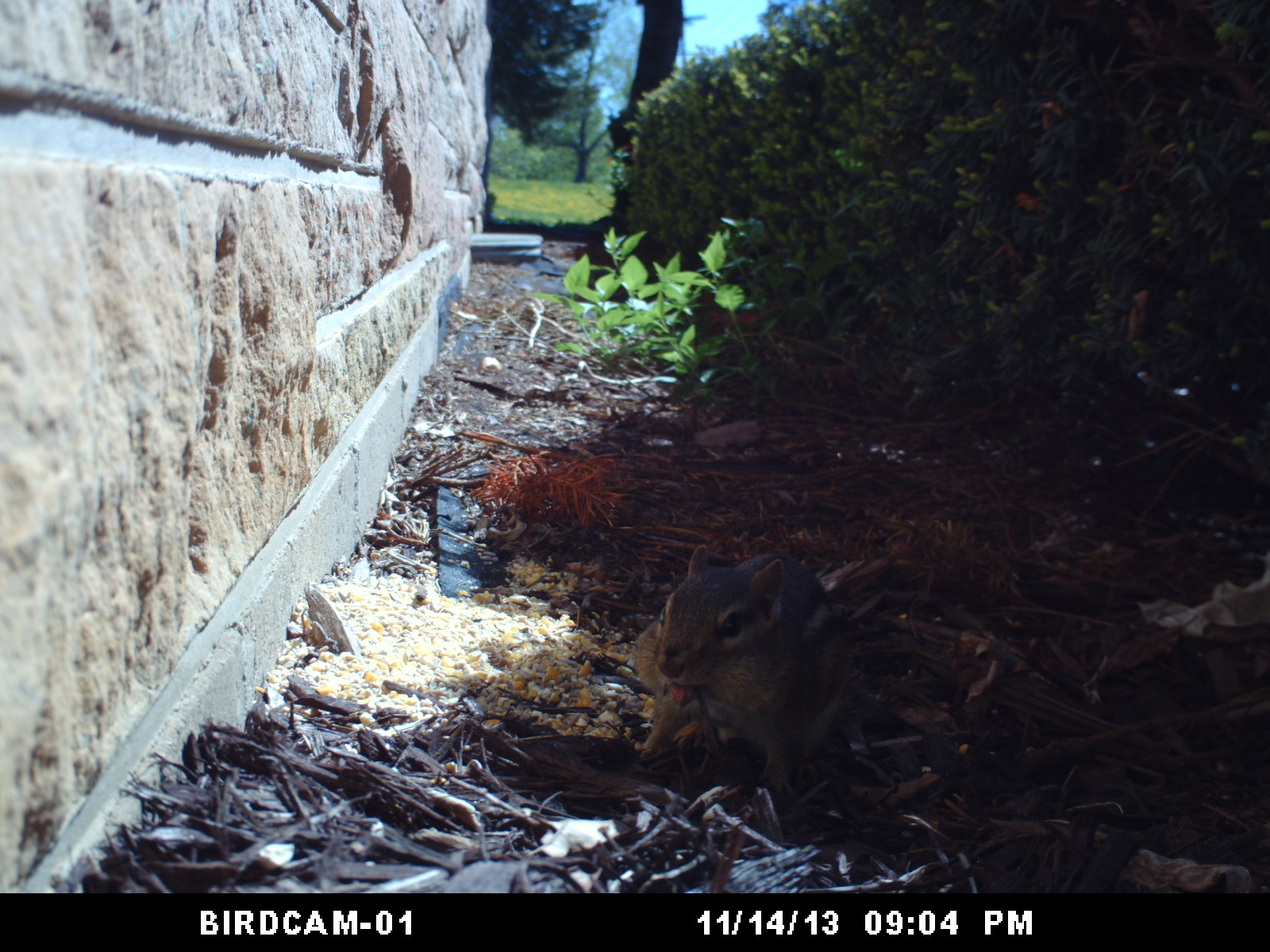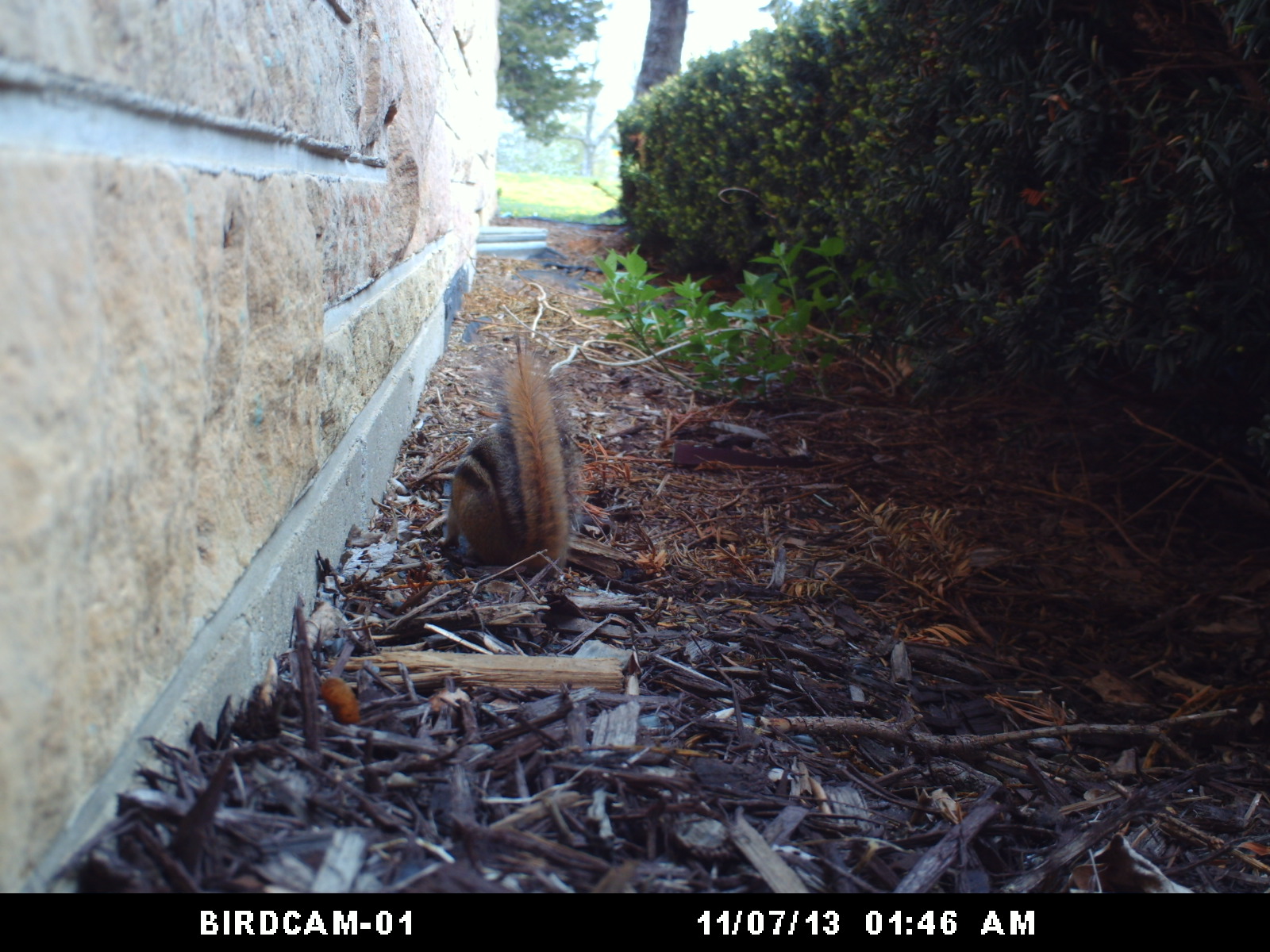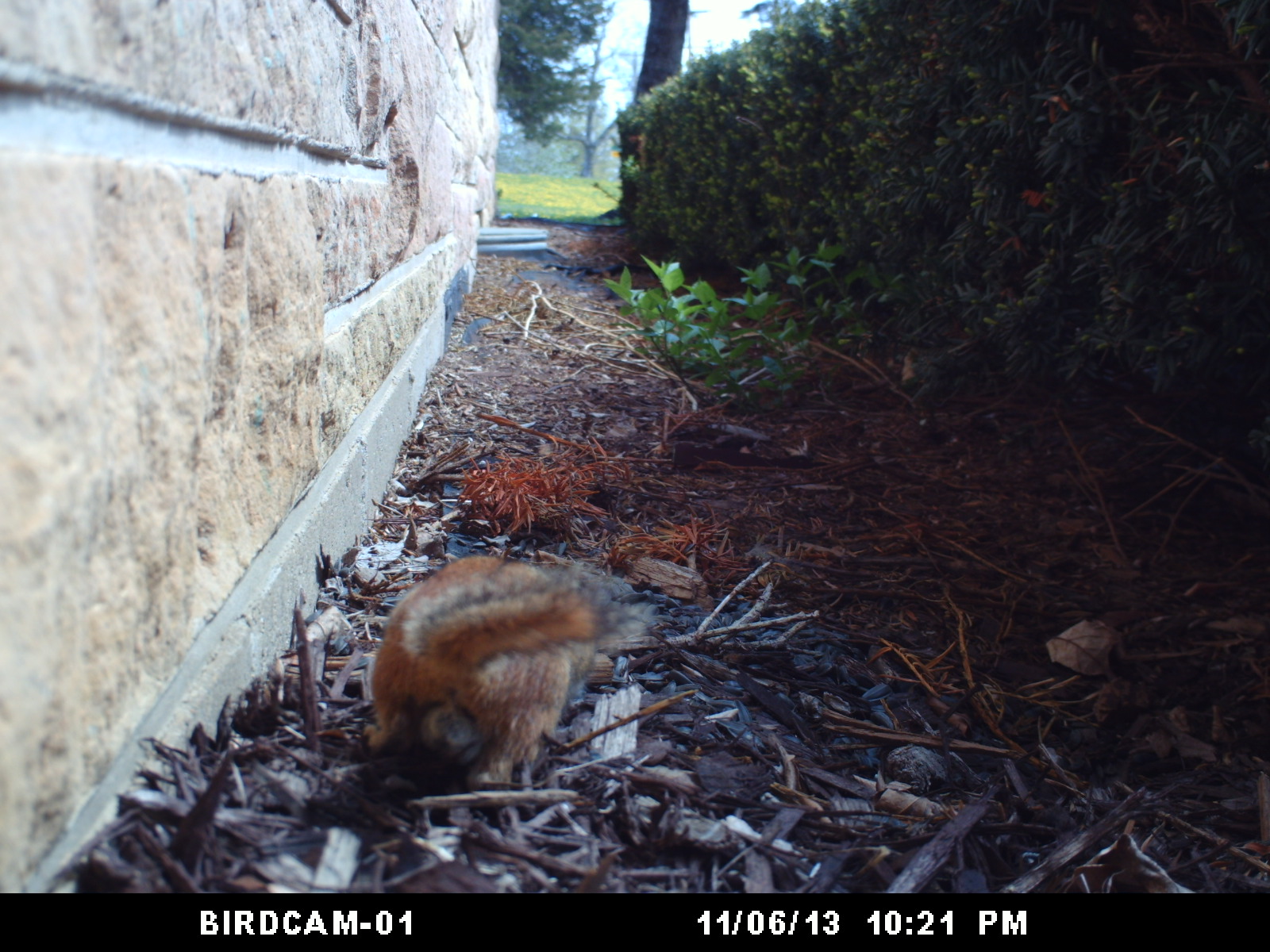Now that the camera is back on the ground, I’m getting mostly chipmunk photos, which is unsurprising given that it’s on a seed pile behind a hedge in Madison, WI. I’m trying to figure out how to get the most useful info from the photos I have.  Not that identification is much a challenge with this species, but I got some nice “documentation shots” of field marks. As mentioned, they’re “brightly-colored” as mammals go, with distinct patterning on the fur. Part of the pattern is the 5 dark lines that run dorsally along the animal, with the mid-line being the longest. The paired dark lines on either side of the chipmunk outline a white stripe. I think this is easiest to see in photos where the chipmunk is sitting facing directly away from us.
Not that identification is much a challenge with this species, but I got some nice “documentation shots” of field marks. As mentioned, they’re “brightly-colored” as mammals go, with distinct patterning on the fur. Part of the pattern is the 5 dark lines that run dorsally along the animal, with the mid-line being the longest. The paired dark lines on either side of the chipmunk outline a white stripe. I think this is easiest to see in photos where the chipmunk is sitting facing directly away from us.
 The facial pattern of chipmunks is distinctive with alternating light and dark lines. Also, look at those big eyes! It’s hard not to think of these little guys as cute. I’ve counted 3 chipmunks at once under the feeder, so unsure if there are more than that in the yard. They also seem to have different coloration, but I don’t know much about identifying and differentiating individuals reliably. One of them has a lot of furry white behind the ears, and another is really richly colored. I was surprised to find that they have an average lifespan of less than a year (but can be up to 5)! Maybe these chipmunks are young from last year. I captured this photo (below) of the rusty sides that line the white belly, showing a touch of how colorful this small mammal can be.
The facial pattern of chipmunks is distinctive with alternating light and dark lines. Also, look at those big eyes! It’s hard not to think of these little guys as cute. I’ve counted 3 chipmunks at once under the feeder, so unsure if there are more than that in the yard. They also seem to have different coloration, but I don’t know much about identifying and differentiating individuals reliably. One of them has a lot of furry white behind the ears, and another is really richly colored. I was surprised to find that they have an average lifespan of less than a year (but can be up to 5)! Maybe these chipmunks are young from last year. I captured this photo (below) of the rusty sides that line the white belly, showing a touch of how colorful this small mammal can be.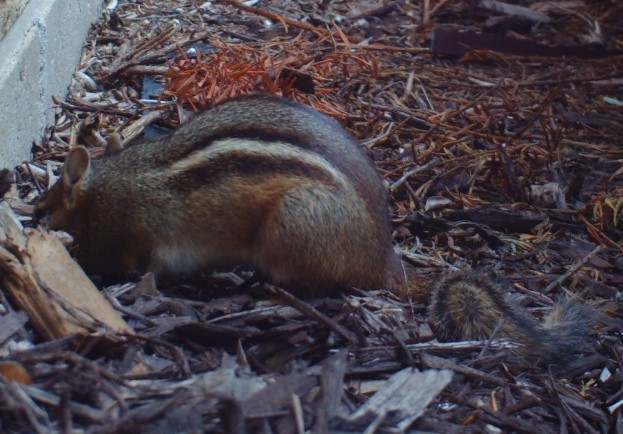
And of course, what do most people think of when they think of chipmunks?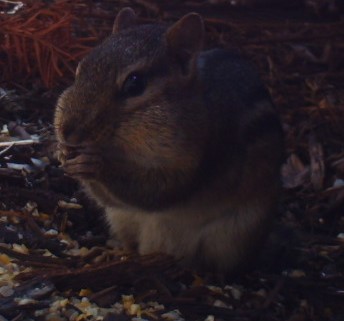 At the seed pile, I see and get plenty of pictures of filled cheek pouches! This photo is dark, but notice the 4 toes on the front paws. This was when the seed pile was full of cracked corn, though chipmunks aren’t picky. They’ve come to every seed blend I have put out (mostly Havegard and black oil sunflower).
At the seed pile, I see and get plenty of pictures of filled cheek pouches! This photo is dark, but notice the 4 toes on the front paws. This was when the seed pile was full of cracked corn, though chipmunks aren’t picky. They’ve come to every seed blend I have put out (mostly Havegard and black oil sunflower).
